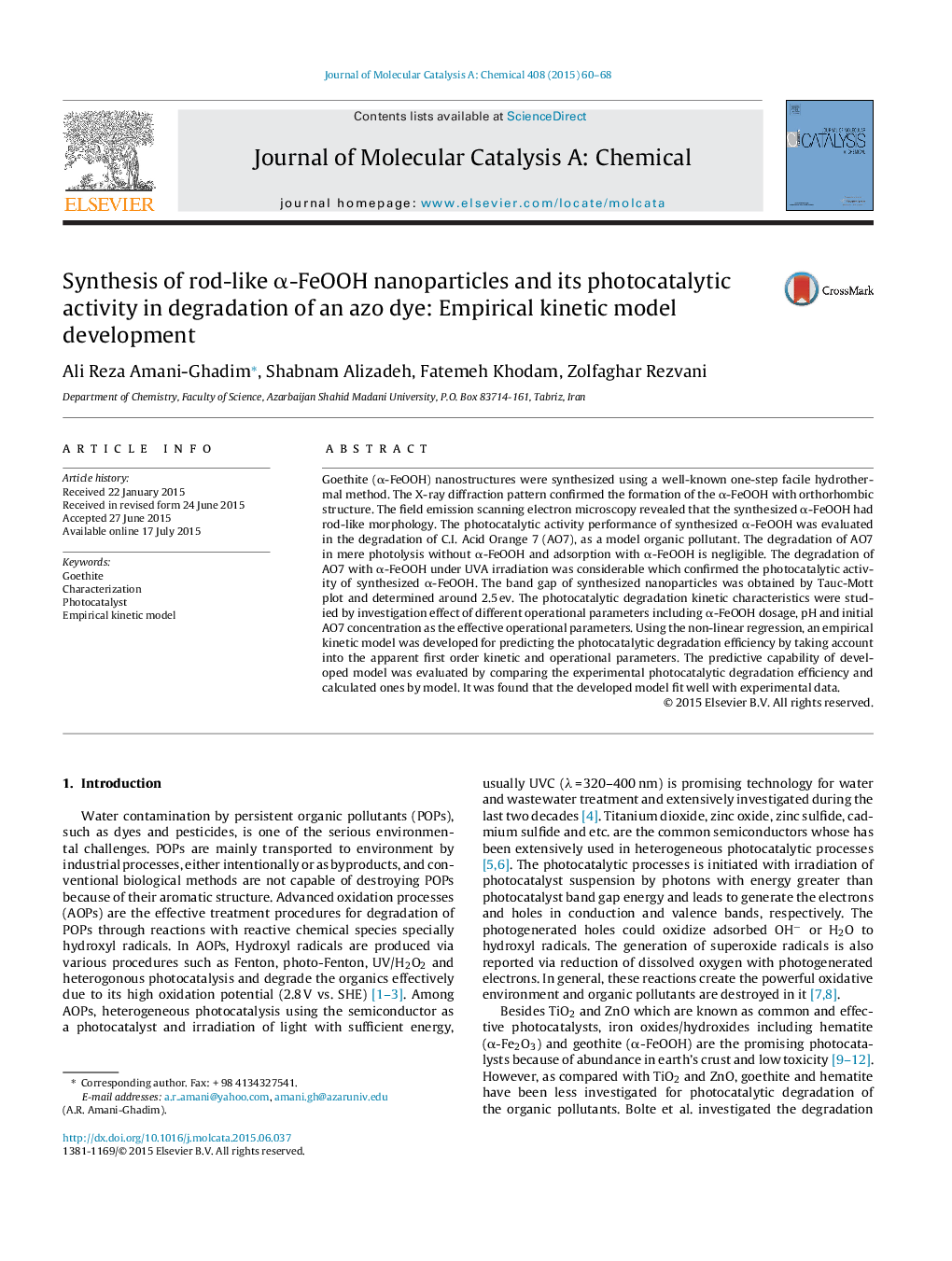| کد مقاله | کد نشریه | سال انتشار | مقاله انگلیسی | نسخه تمام متن |
|---|---|---|---|---|
| 64860 | 48373 | 2015 | 9 صفحه PDF | دانلود رایگان |

• Rod-like α-FeOOH nanoparticles were synthesized via a one-step hydrothermal method.
• The XRD pattern of synthesized α-FeOOH confirmed the formation of goethite phase.
• Rod-like morphology with nanometre size was observed for α-FeOOH nanostructures.
• Photocatalytic activity of α-FeOOH nanoparticles was investigated.
• Developed empirical kinetic model fit well with experimental data.
Goethite (α-FeOOH) nanostructures were synthesized using a well-known one-step facile hydrothermal method. The X-ray diffraction pattern confirmed the formation of the α-FeOOH with orthorhombic structure. The field emission scanning electron microscopy revealed that the synthesized α-FeOOH had rod-like morphology. The photocatalytic activity performance of synthesized α-FeOOH was evaluated in the degradation of C.I. Acid Orange 7 (AO7), as a model organic pollutant. The degradation of AO7 in mere photolysis without α-FeOOH and adsorption with α-FeOOH is negligible. The degradation of AO7 with α-FeOOH under UVA irradiation was considerable which confirmed the photocatalytic activity of synthesized α-FeOOH. The band gap of synthesized nanoparticles was obtained by Tauc-Mott plot and determined around 2.5 ev. The photocatalytic degradation kinetic characteristics were studied by investigation effect of different operational parameters including α-FeOOH dosage, pH and initial AO7 concentration as the effective operational parameters. Using the non-linear regression, an empirical kinetic model was developed for predicting the photocatalytic degradation efficiency by taking account into the apparent first order kinetic and operational parameters. The predictive capability of developed model was evaluated by comparing the experimental photocatalytic degradation efficiency and calculated ones by model. It was found that the developed model fit well with experimental data.
Figure optionsDownload high-quality image (137 K)Download as PowerPoint slide
Journal: Journal of Molecular Catalysis A: Chemical - Volume 408, November 2015, Pages 60–68